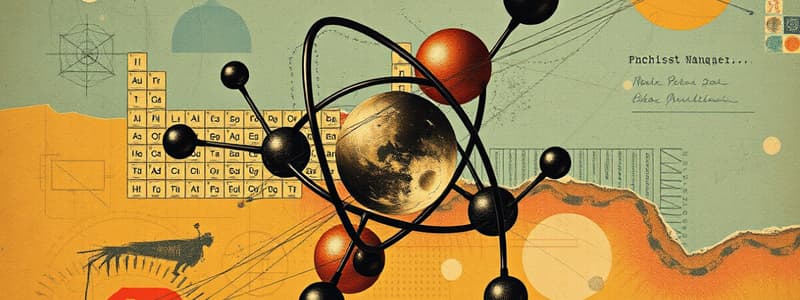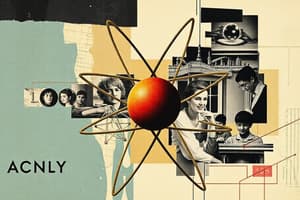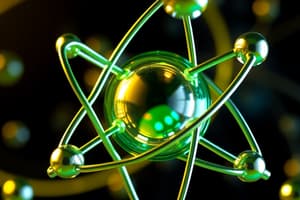Podcast
Questions and Answers
What defines an element?
What defines an element?
- A particle that can lose protons
- A pure substance made of atoms of only one kind (correct)
- A type of chemical compound
- A combination of different atoms
What is the significance of the atomic number in an atom?
What is the significance of the atomic number in an atom?
- It measures the chemical reactivity of the atom
- It indicates the mass of the atom
- It determines the number of neutrons in the atom
- It identifies the number of protons in the atom (correct)
Who is recognized as the father of the periodic table?
Who is recognized as the father of the periodic table?
- John Dalton
- Dmitri Mendeleev (correct)
- Albert Einstein
- Marie Curie
How are elements represented in the periodic table?
How are elements represented in the periodic table?
Which of the following statements about atoms is true?
Which of the following statements about atoms is true?
Flashcards are hidden until you start studying
Study Notes
Atoms and Elements
- Atoms are the simplest particles involved in chemical reactions and can maintain their chemical properties during physical and chemical changes.
- They are the fundamental units or building blocks of elements, defining the unique characteristics of each element.
- An element is a pure substance made entirely of one type of atom.
The Periodic Table
- There are 118 known elements in the periodic table, ranging from hydrogen (H) to oganesson (Og).
- Elements are represented by symbols, which consist of either a single uppercase letter (e.g., H for hydrogen) or a combination of uppercase and lowercase letters (e.g., Cu for copper).
- Each element has a specific number of protons, known as the atomic number, which determines its identity and position in the periodic table.
Dmitri Mendeleev
- Recognized as the father of the periodic table, Dmitri Mendeleev arranged elements based on their physical and chemical properties, highlighting their relationships.
- The periodic table serves as a comprehensive reference for understanding the properties of all chemical elements.
Studying That Suits You
Use AI to generate personalized quizzes and flashcards to suit your learning preferences.




